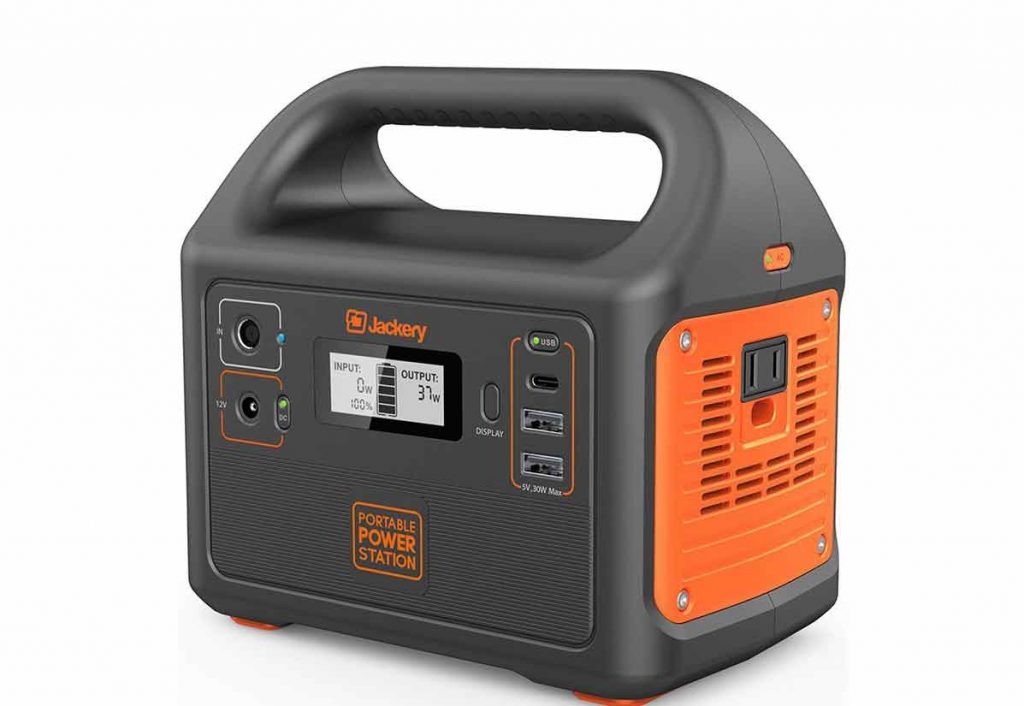Solar Generators are an awesome option when you want to power your devices at home or outdoors. With a solar generator, you won’t have to worry about your devices running out of power as the power station offers an amazing backup solution. The fact that you can use solar energy to recharge it is another plus as solar is a clean source of energy available everywhere.
But apart from charging your devices, what can a 300-watt solar generator power? We answer this question plus and give options to look into when picking a solar generator.
What can a 300 Watt Solar Generator Run?
First of all, you should understand that the 300 Watt is the inverter rating. This wattage represents the maximum draw you can get out of the battery pack via the DC-AC conversion from the inverter. Therefore this solar generator will not power anything above 300 watts. Also, any device application that is rated lower than 300 watts but has a higher surge watt (the initial power to start the device) will not work either.

Solar Generators are an awesome option when you want to power your devices at home or outdoors. With a solar generator, you won’t have to worry about your devices running out of power as the power station offers an amazing backup solution. The fact that you can use solar energy to recharge it is another plus as solar is a clean source of energy available everywhere.
But apart from charging your devices, what can a 300-watt solar generator power? We answer this question plus and give options to look into when picking a solar generator.
What can a 300 Watt Solar Generator Run?
First of all, you should understand that the 300 Watt is the inverter rating. This wattage represents the maximum draw you can get out of the battery pack via the DC-AC conversion from the inverter. Therefore this solar generator will not power anything above 300 watts. Also, any device application that is rated lower than 300 watts but has a higher surge watt (the initial power to start the device) will not work either.

Other Components of a Solar Generator
Portability
A 300-watt solar generator should be light enough to carry around. With a lithium-ion battery, it should not weigh more than 6 pounds and it should also include a handle so that it is easy to move around with.
Costs
If it’s a small 200 – 300 watt solar generator it shouldn’t cost an arm and a leg. Your budget should be anywhere between $150 to $300.
Display
The generator should also have a well-lit LCD Display that gives information on the state of charge, voltage, and an indication of how much power is left or how far it is when charging.
Lithium-ion Battery
A lithium-ion battery is a type of rechargeable battery in which lithium ions move from the negative electrode to the positive electrode during discharge and back when charging.
Lithium-ion batteries are common in consumer electronics. They are also used in electric vehicles and large storage applications.They have a higher energy density, which means they can store more energy than lead-acid batteries. This makes them a better choice for applications where weight and space are limited.
Battery Management System
A battery management system (BMS) is an electronic system that manages a battery pack’s state of charge, state of health, and thermal state while protecting the battery pack from over-charging and over-discharging. The BMS also monitors the pack’s temperature and voltage. The BMS is a critical part of any e-bike because it ensures the battery pack operates safely and reliably
Charge Controller
A charge controller is a device used to manage the charging of a battery bank from a solar array or other DC power source. The controller will limit the rate of charge to prevent damage to the batteries and also help to optimize the charging process to achieve the longest possible battery life.
One of the main advantages of MPPT controllers is that they are more efficient than PWM controllers. They can extract more power from the solar panels, which means that they can charge the batteries more quickly. MPPT controllers can also handle a wider range of input voltages, which makes them suitable for
Options when Charging a 300 Watt Solar Generator
Solar generators can be charged in three ways depending on where you are and the circumstances; an AC outlet, a 12V/24V carport, or a Solar panel. To charge from a wall AC outlet should take around 5-6 hours and 6-7 hours from a carport or a 60W solar panel.
Charging a 300 Watt Solar Generator from a Solar Panel
As stated before to charge a 300-watt solar generator will need a 50-60 watt solar panel. This can be a lifesaver as you may not access power from the grid due to a blackout or you are out camping in the woods. This Solar Panel will charge the solar generator in around 6-7 hours depending on the sunlight availability. You may be tempted to increase the size but you can do so up to 100 watts for this solar generator as it cannot be exposed to a higher open voltage from a higher wattage solar panel.